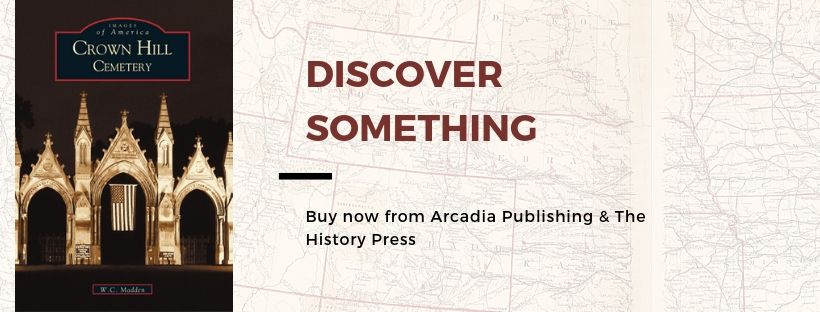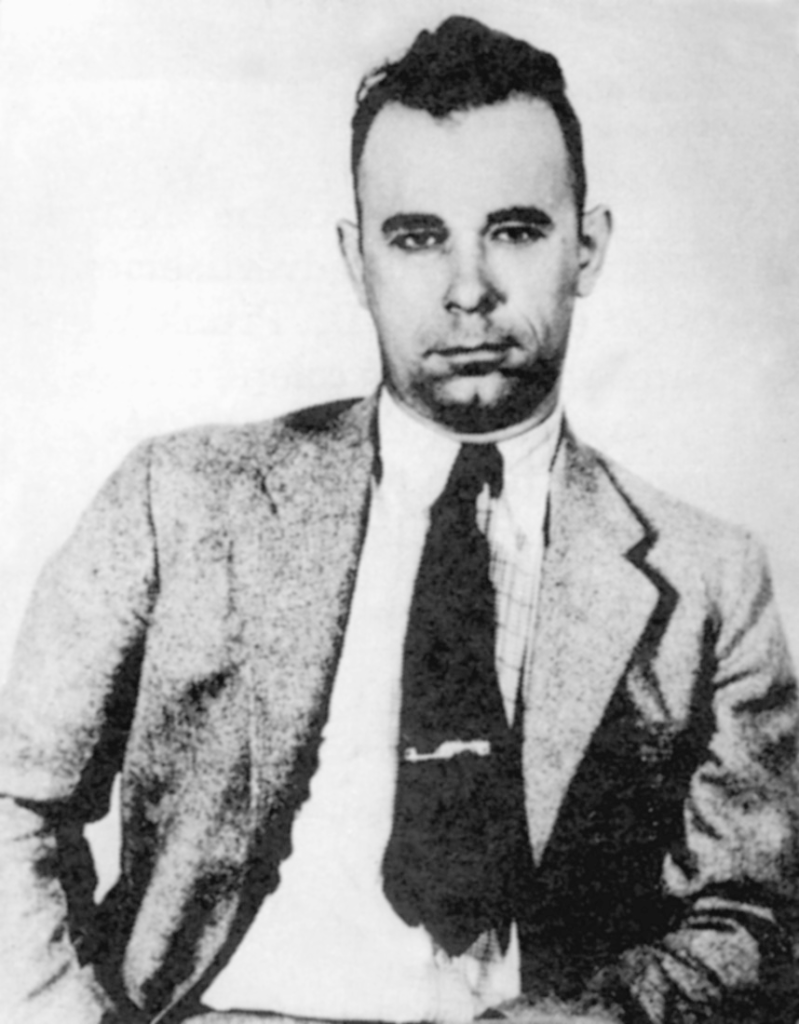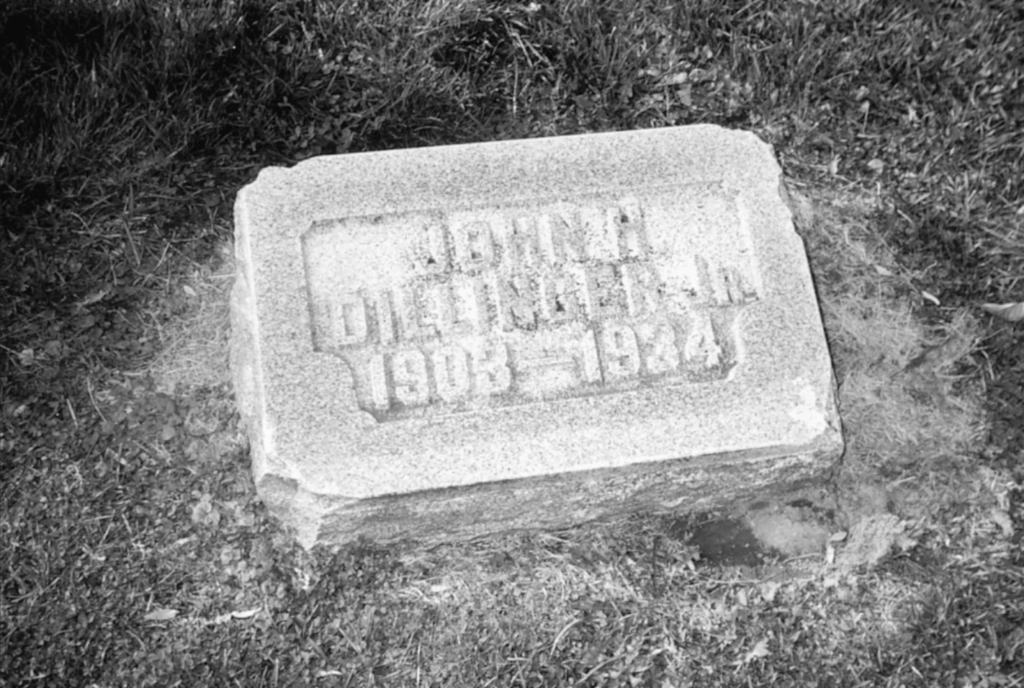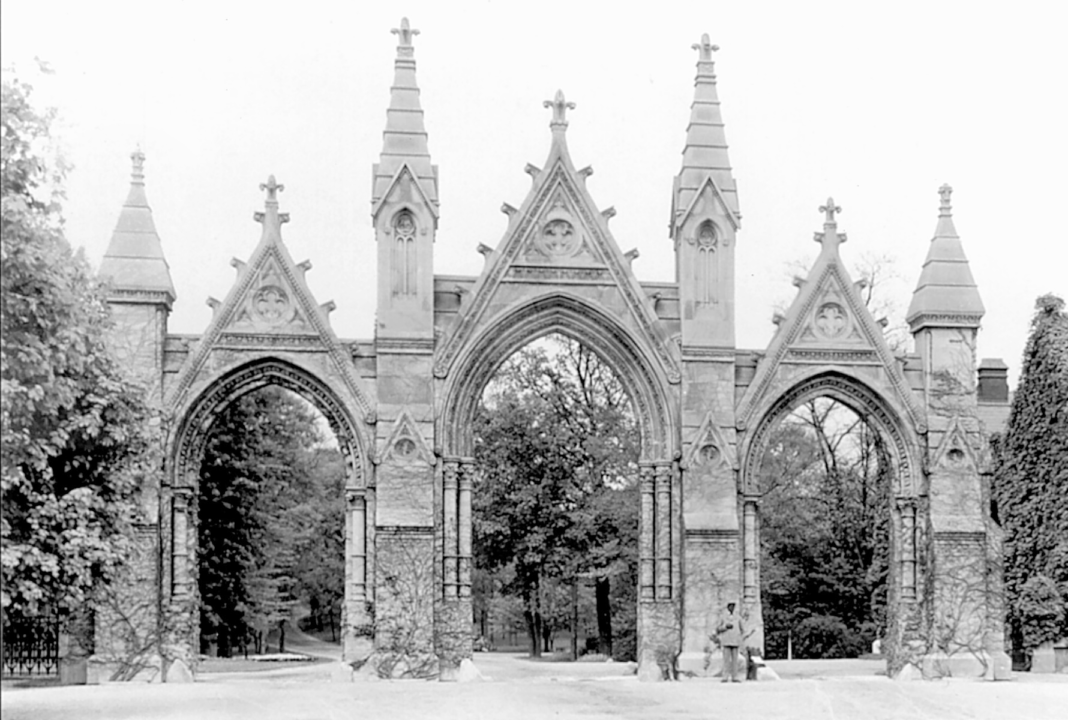
Crown Hill Cemetery in Indianapolis is one of the largest cemeteries in the world, housing the remains of some 200,000 souls from the richest of the rich to the poorest of the poor. That’s the way it was meant to be. At the dedication of the cemetery, former Senator Albert S. White said the cemetery would be for “the rich and the poor, the proud and the humble, alike may enter here.” People from all walks of life are buried there from the homeless to a United States President—to John Dillinger, the infamous gangster.
This year Dillinger’s remains may be moved to a new location in Crown Hill—or they may not. However the legal battle shakes out, it’s hard to find a boring spot in this Indiana cemetery.
Presidents, Poets, and Pittsburgh Expats
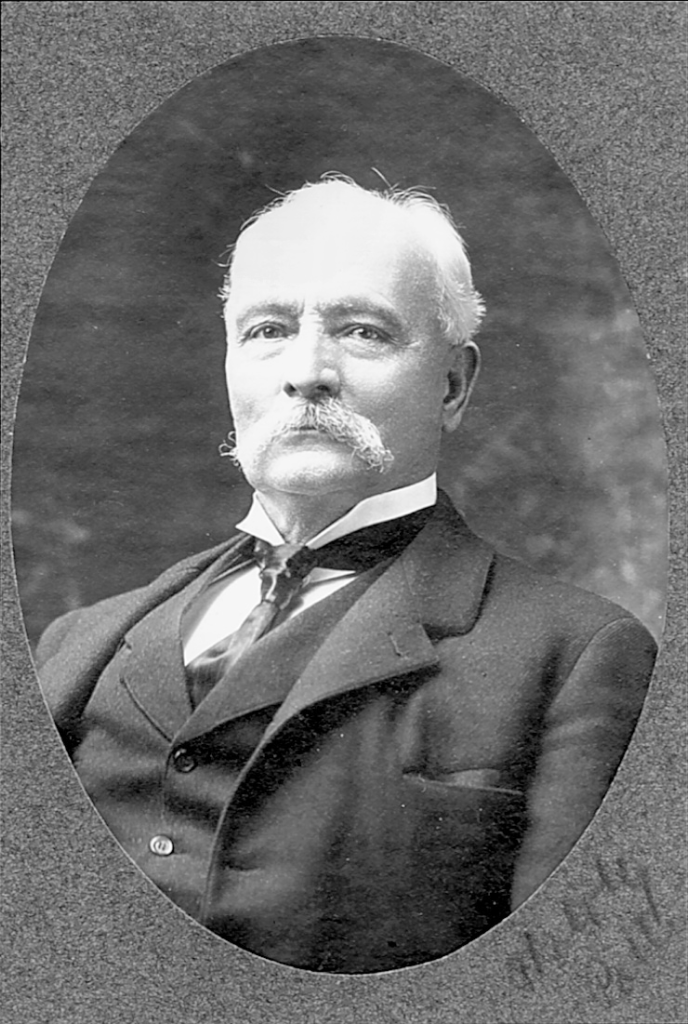
Frederick W. Chislett, 1827–1899, was Crown Hill’s first superintendent and served for 36 years. Chislett was a landscape architect from Pittsburgh. He initially developed seven burial sections in the cemetery. 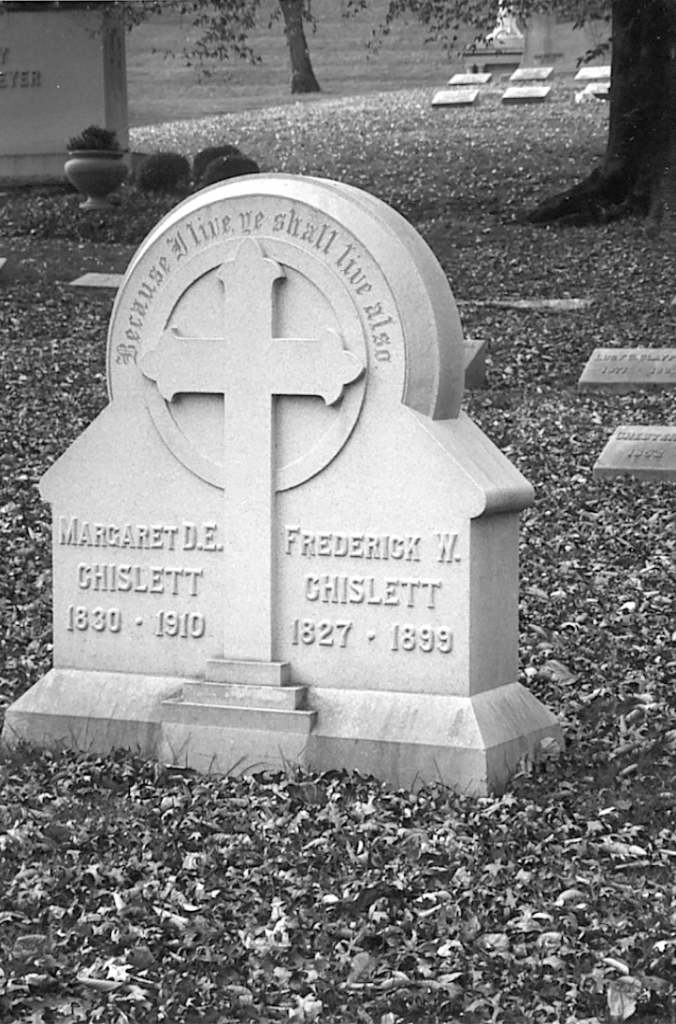
His grave is located in Section 14. 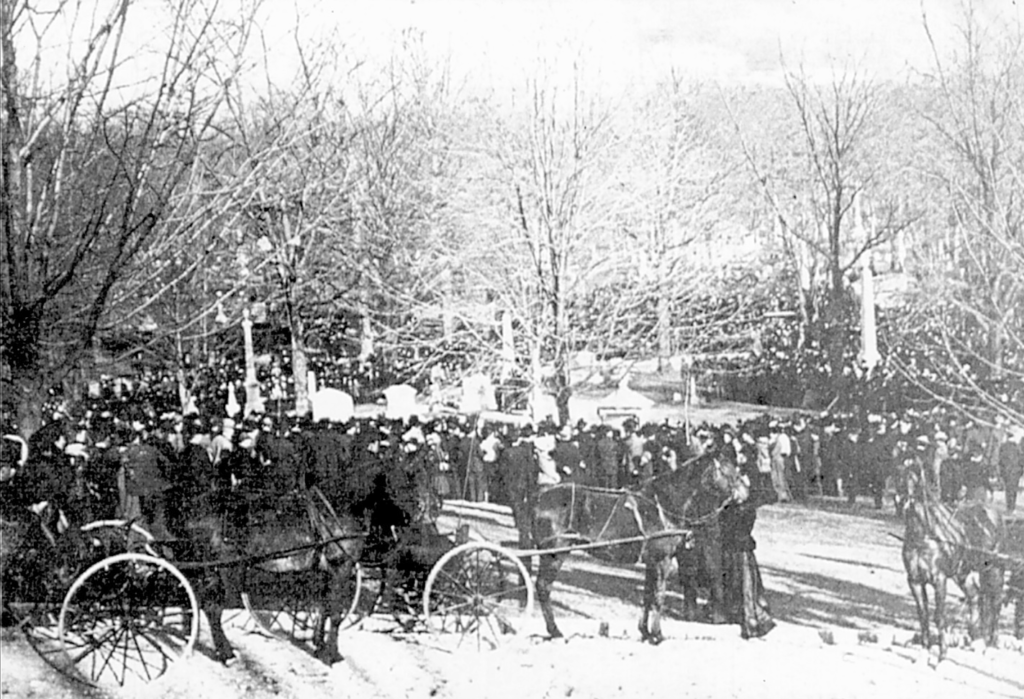
The funeral of President Benjamin Harrison was one of the largest in the history of Crown Hill Cemetery as seen by this photo from 1902. 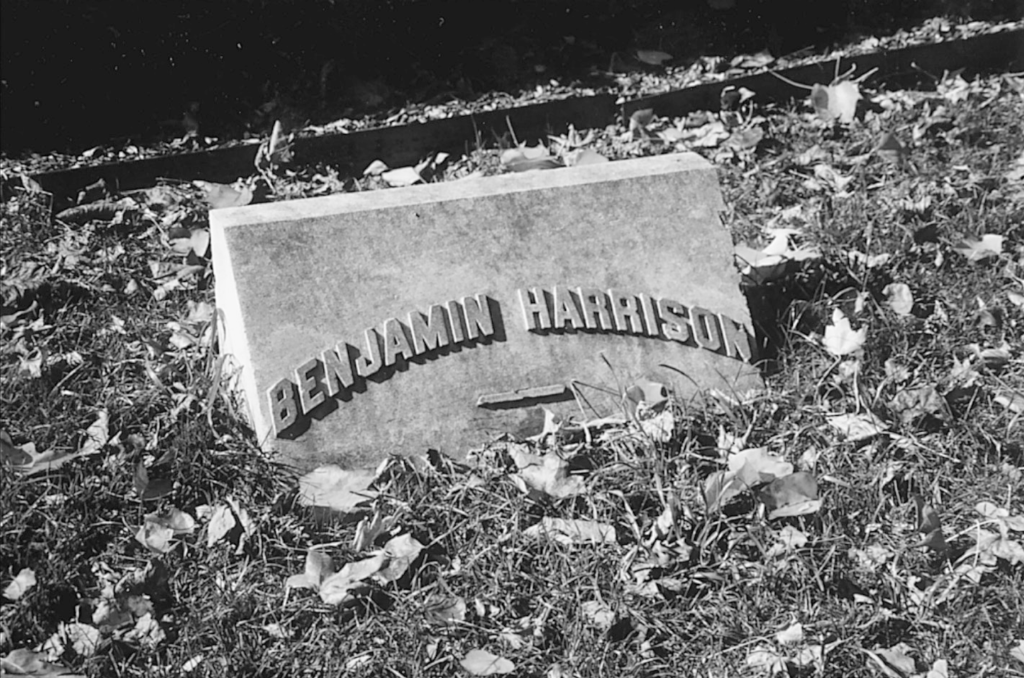
His grave is located in Section 13, Lot 57. (Photo courtesy of Crown Hill Cemetery.) 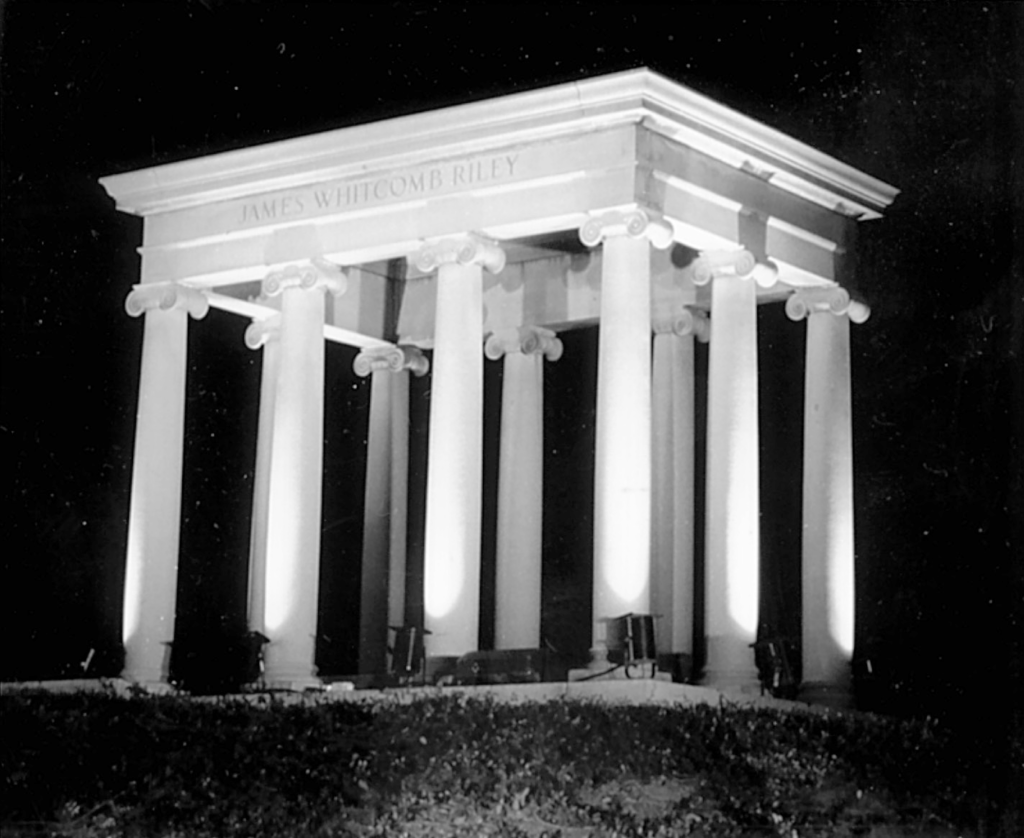
The top of the summit, the highest point in Indianapolis, belongs to James Whitcomb Riley, 1849–1916. When he died, some 35,000 people filed past his casket as it lay in state under the dome of the Indiana State Capitol. 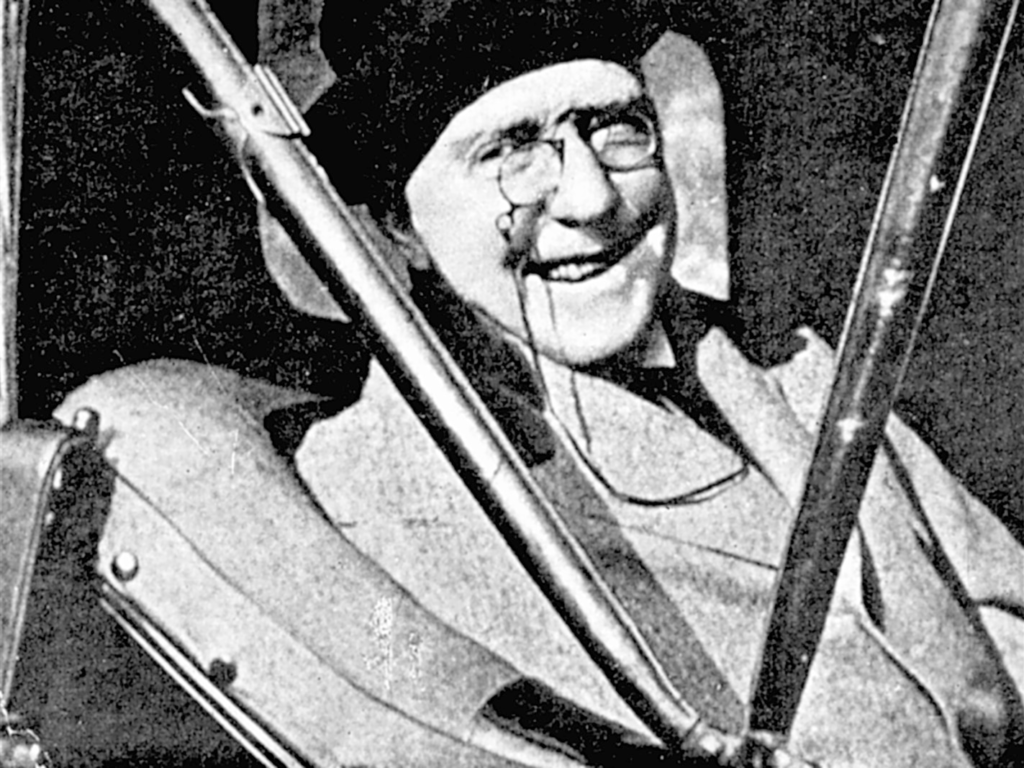
Known as the “Hoosier Poet,” Riley’s poetry became famous and he penned many poems and books. His best-known poems include “Little Orphan Annie,” “The Raggedy Man,” and “When the Frost Is on the Pumpkin.” Born in nearby Greenfield, Riley’s home in Indianapolis is now a museum. 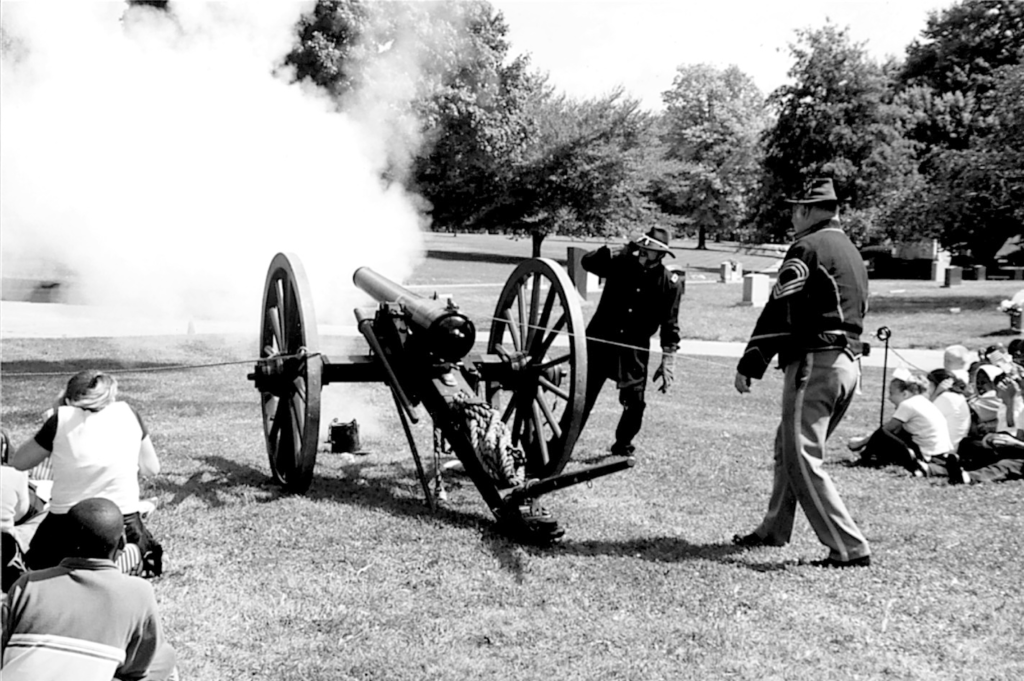
Union soldiers” fire-off a cannon during the annual Spirit of Freedom Celebration, which honors the role of African Americans in the Civil War. Some 1,000 students from Indianapolis Public Schools come to the celebration. (Photo courtesy of Marty Davis.) 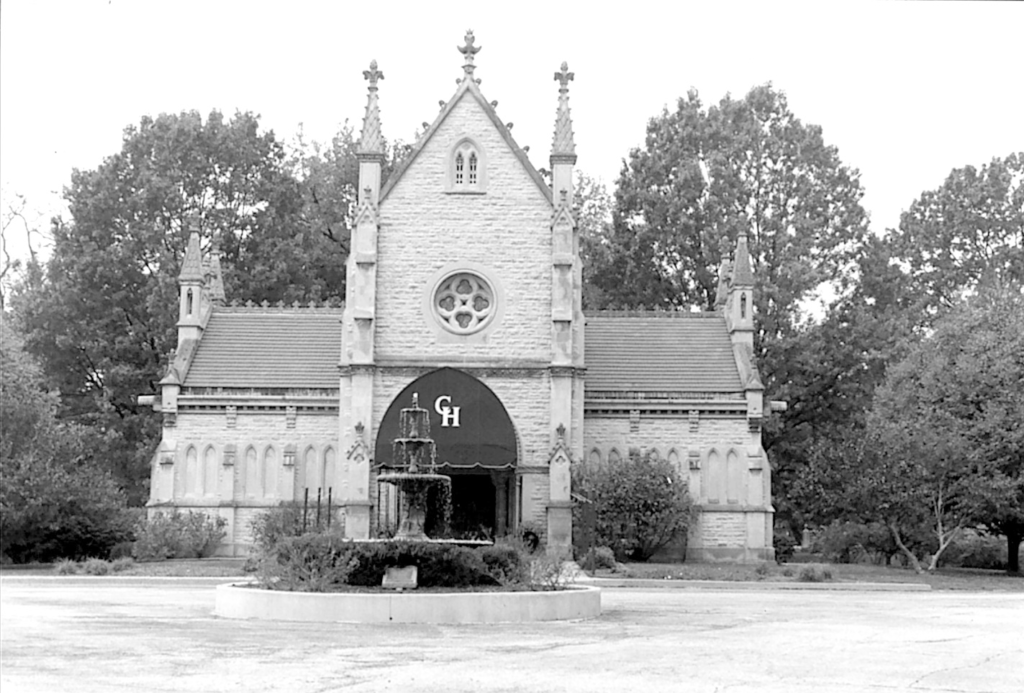
The Gothic Chapel was designed by Diedrich A. Bohlen and constructed by Peter Routiers in 1875 at a cost of $38,922.25. It was originally built to temporarily entomb the remains of as many as 96 bodies when burial was not immediately possible. This was due generally to a delay in burial arrangements or special requests by members of the deceased’s family. Although the interior was designed for funeral services during inclement weather, the unpleasant surroundings and bleak interior made the “vault” an unpleasant place to visit. In 1971, it underwent restoration and became a place for services, lectures, and tours. 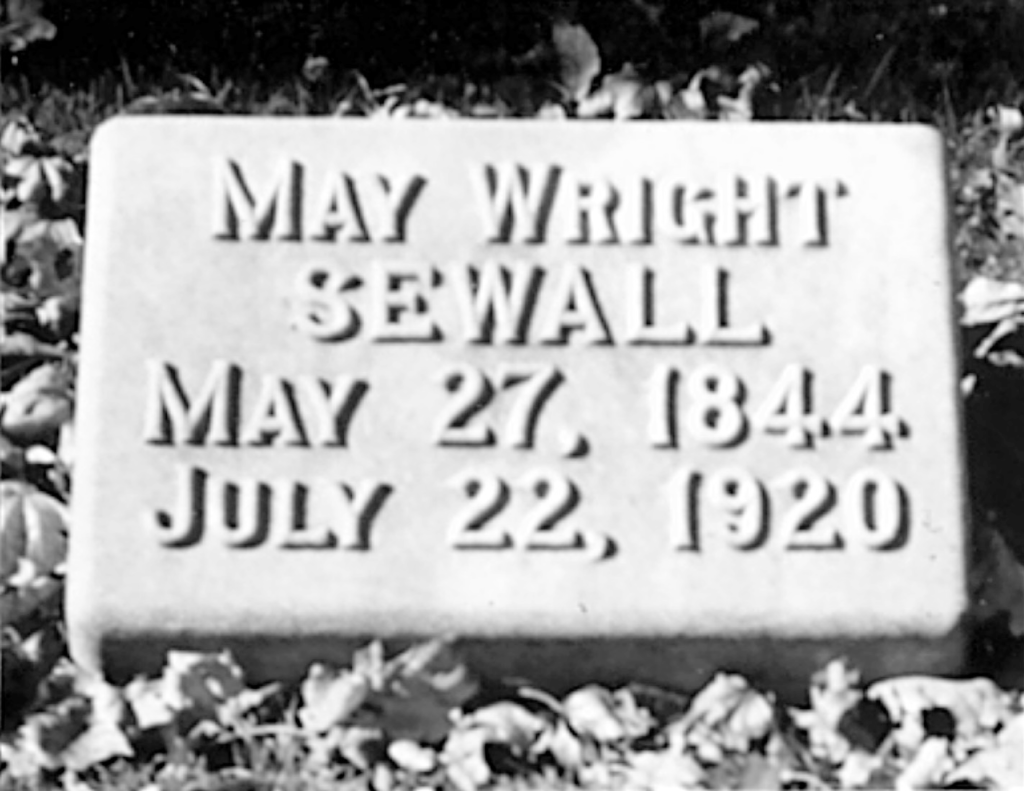
May Wright (Mary Eliza) Sewall, 1844–1920, was an educator and leader in art and other cultural interests in Indianapolis 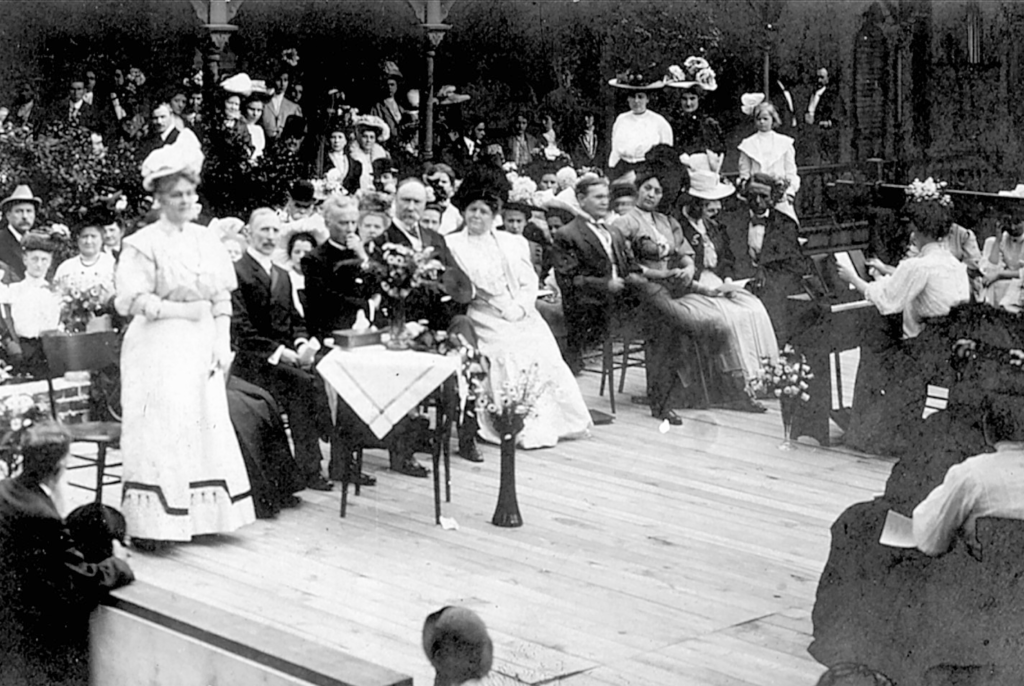
Born in Greenfield, Wisconsin, Sewall first came to Indianapolis and taught at the first high school. She campaigned for women’s suffrage and helped found the Equal Suffrage Society of Indianapolis.
John Dillinger
The most asked for grave in Crown Hill is that of John Dillinger, the famous bank robber of the 1930s. He was born in a middle-class Indianapolis neighborhood on June 22, 1903. He was killed by federal agents at 10:40 p.m. on the night of Sunday, July 22, 1934, in an alley outside the Biograph Theatre in Chicago. Some 15,000 people went to his wake. He was buried in Crown Hill three days later and a couple of days after that an elaborate protection of concrete mixed with scrap iron and chicken wire was placed at staggered levels above the coffin to protect the grave from any attempt to vandalize it.
His grave is located in Section 44, Lot 94 in a family plot. But there have always been conspiracy theories that Dillinger was not the person buried that day—and that’s why some of his family members are trying to exhume and test the body, despite the protests of Crown Hill.
